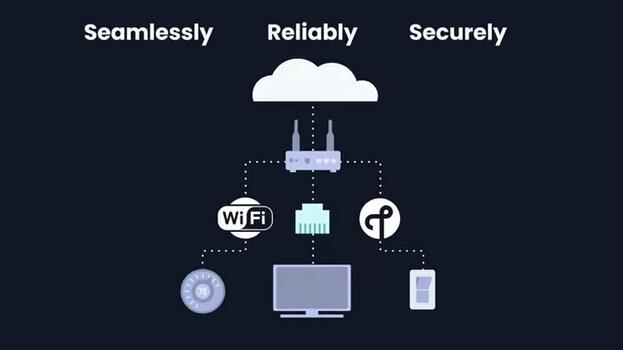Is Matter worth the wait?

Is Matter worth the wait?

An ambitious new smart home networking standard is on the horizon, dubbed Matter, and promises to make the connection between your various smart lights, smart speakers, smart TVs, smart cameras and smart sensors more stable and seamless. Thread is a new wireless format that works well with Matter and is already permeating many products, but it's far from ubiquitous.
For those looking to drag their home into the future, is it worth waiting for Matter to launch before picking up new gear?
What is Matter?
Matter is a way for your home devices to talk to each other. It's built as a mesh network, so communication doesn't depend on a single central node, like a Wi-Fi router. This helps address network coverage issues in larger homes, while also providing flexibility for device replacement and expansion. If a device leaves, quickly establish alternate communication paths through various IP-based networks. Thread networks still need so-called border routers to orchestrate their connections, but instead of separate hardware, this function is bundled with some devices.

What is the difference between Matter and Thread?
Thread is one of the main underlying technologies for building the Matter standard. Note that this is not the only one. Proven Wi-Fi and Ethernet will also be involved in connecting Matter devices together, while Bluetooth can help with the initial connection and back it up. Matter's role is to serve as the common networking foundation for what we know as connected home platforms, such as Google Home and Apple HomeKit. With this shared foundation, devices from multiple manufacturers can easily connect to each other, at least that's what Matter promises.
Why should I use a Matter device at home?
The main reason for interest in Matter at home is interoperability. If you have smart home devices from multiple manufacturers, and also from different types of phones, tablets, and PCs, they don't always work well together. In theory, Matter should provide more consistency despite a wide range of platforms in use.
Thread, while separate from Matter, should be able to provide access over longer distances and even support low-power devices that don't need to be plugged into an outlet. Mesh networks should also provide more stable connections due to the extra redundancy.
When can I use Matter?
Although new devices have been supporting Thread for over a year, we won't see the official release of the Matter standard until this fall, and of course it's hard to say at the moment, because the ticket has been bounced twice.
So, should we wait until Matter releases before buying new devices?
Normally, since we're only just entering the fall, we should wait until Matter is fully live. Of course, this assumption is only based on the current timetable for connecting to the Standard Alliance, and the possibility of another bounce this time is relatively small.
While some manufacturers have started supporting Matter early on, it's still a few years before it's fully ubiquitous. Google, Samsung, Apple, and many other big companies support Matter, so at the very least, we can expect devices from these manufacturers to support it. Among other device brands, we can expect gradual and widespread adoption following their lead.
Therefore, when Matter is officially released, its impact will not be too obvious, after all, it will take time.
Therefore, if necessary, you can start with smart devices that have clearly supported Matter in the future. A software update could also make them compatible with Matter over Wi-Fi in the future.